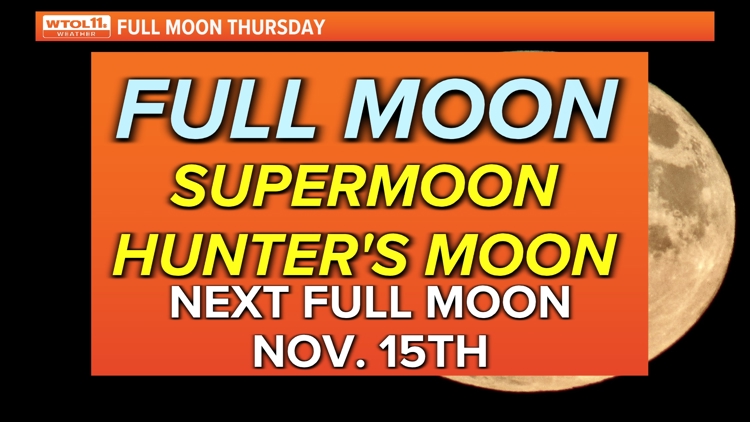TOLEDO, Ohio — October has been a very busy month when it comes to astronomical happenings.
At the beginning of October, much of the US was able to see the Aurora Borealis - or Northern Lights - as a strong geomagnetic storm stretched across the country.
Beginning on Oct. 12th, the C/2023-A3 comet could be seen soaring across the northern hemisphere.
Soon, on Oct. 17, the month's full moon (known as the Hunter's Moon) will appear as another supermoon, meaning it will appear slightly larger than normal.
Here's everything you need to know about this week's celestial events, from the full moon, to the comet and more.
C/2023-A3 Comet
A comet can be seen passing over the Earth's horizon around sunset each night through the rest of October. In order to view it, look west right after sunset.
Comet Tsuchinshan-ATLAS was just discover last year. The next time this comet will be in view again will be 80,000 years from now, so say "hi" while you still can.
Each night, it will only be visible for a few minutes before fading from view. The best way to measure this is take two fists held at arm's length.

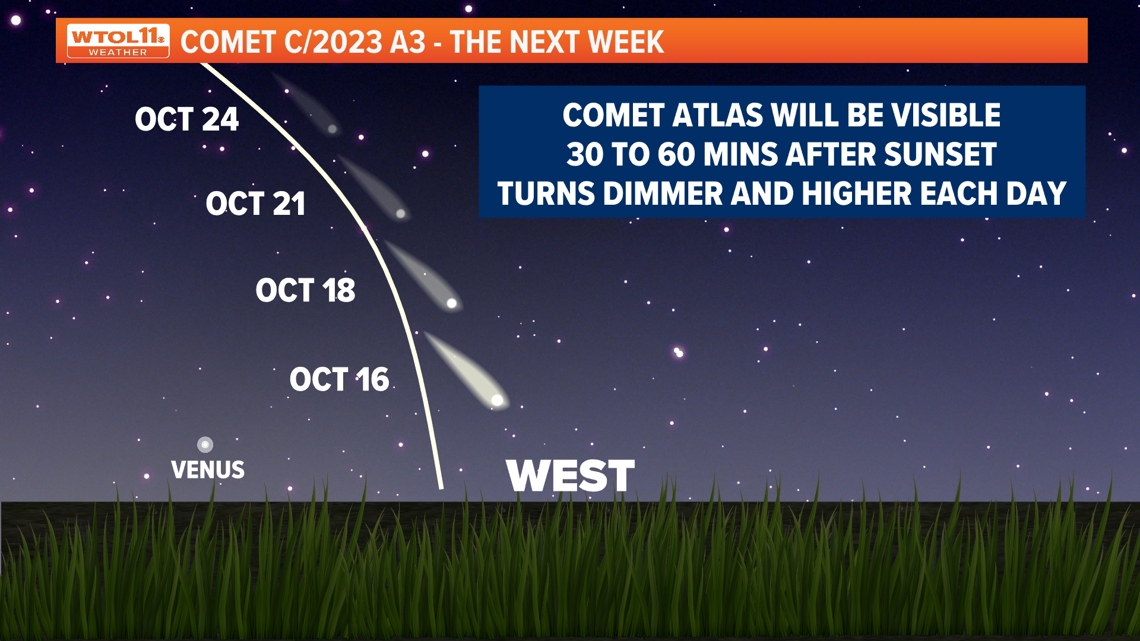
Supermoon
A supermoon occurs when the full moon phase lands during the moon's perigee, or when it is at its closest point to Earth in its elliptical orbit. The moon will look bigger and brighter.
Supermoon's occur only three or four times a year. There are four in 2024. One in August, September, October and November. The next Supermoon will be Nov. 15. It can only happen during a full moon phase.

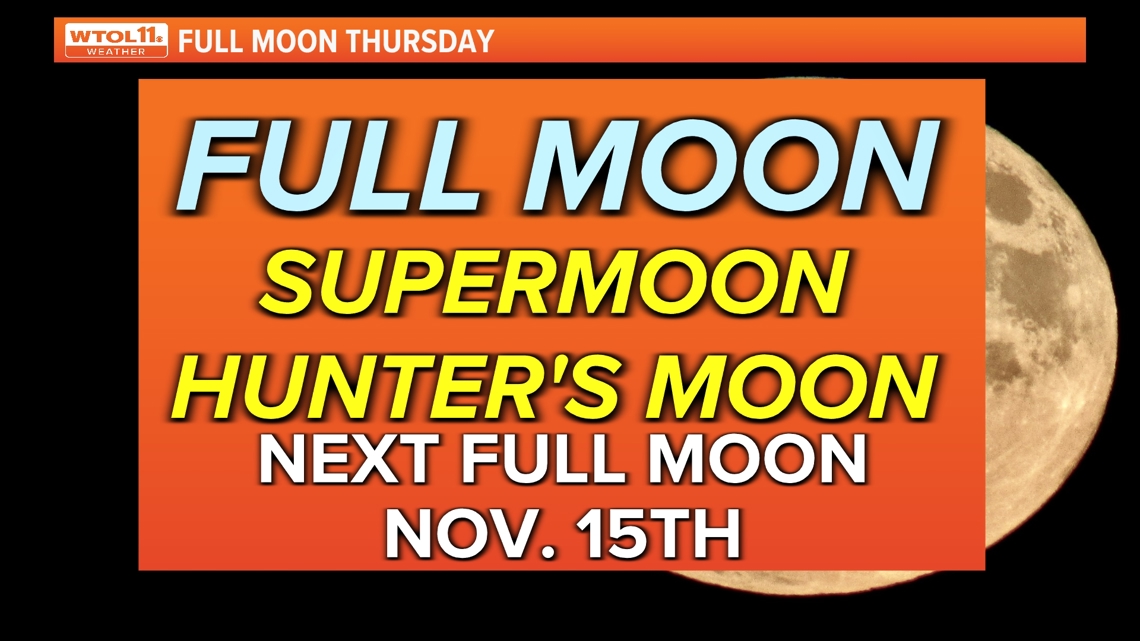
Hunter's Moon
Each full moon has a unique name. October's full moon is called a Hunter's Moon because traditionally, the month was spent preparing for winter by hunting, slaughtering, and preserving meats. It can also be called the "Drying Rice Moon, Falling Leaves Moon, and Freezing Moon."
Every three years, the full moon in October is called the "Harvest Moon" as it's closest to the autumnal equinox.
The moon will reach complete fullness around 7:26 a.m. Thursday morning and will continue to look full Thursday night.

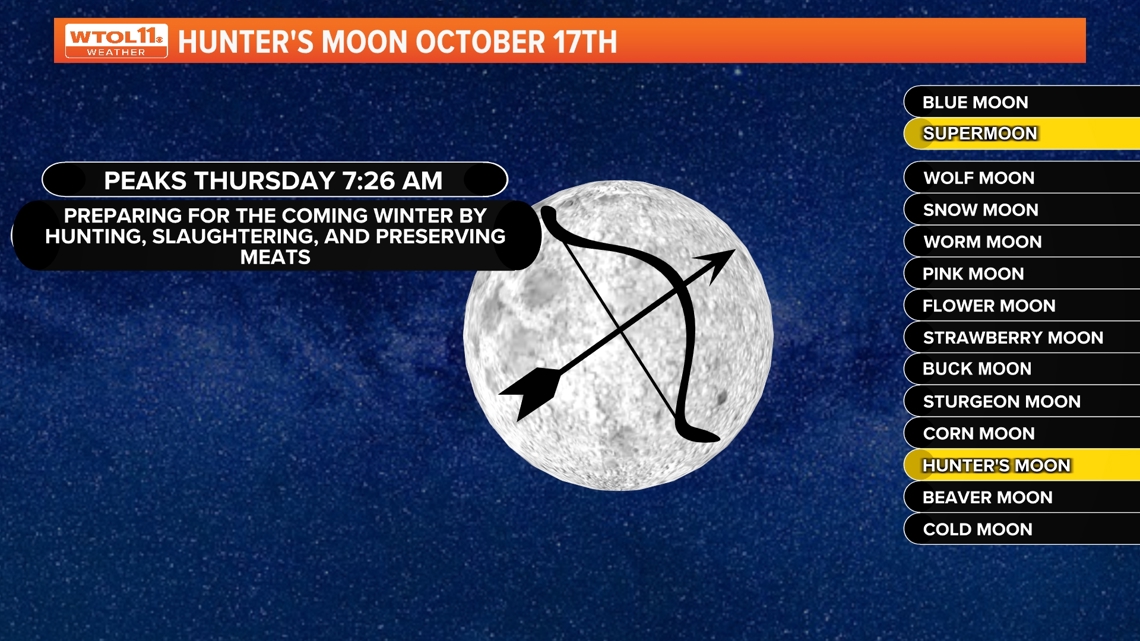

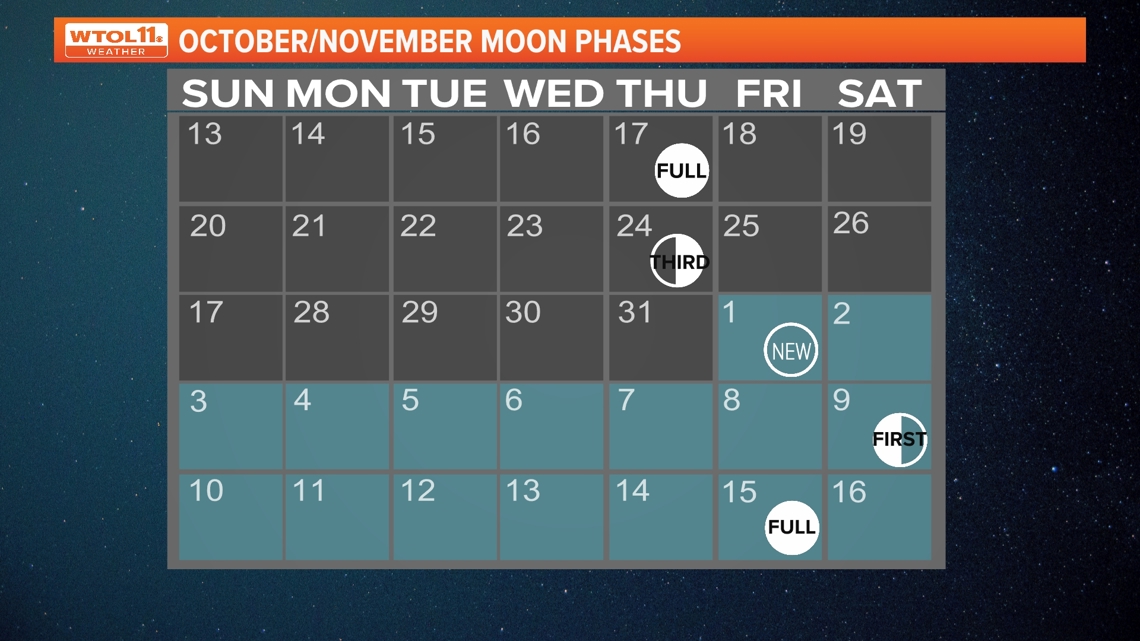
Mini-moon
While the moon may be "super" this month, Earth will also, incidentally, have a mini-moon orbiting it until Nov. 25. "2024 PT5", as it's called, is only 33 feet long and won't be visible to the naked eye, or even an amateur telescope. But even if you can't see it, you'll know it's there.
Northern Lights
For the rest of this week, chances to view the Northern Lights will be low. However could be back as geomagnetic activity could change.
The sun is currently at the peak of its solar cycle. This means geomagnetic storms, caused by coronal mass ejections from the sun, will be more likely than typically during this time. Stay with WTOL 11 on air, online and on our free mobile news app for updates when Northern Lights viewing becomes possible.

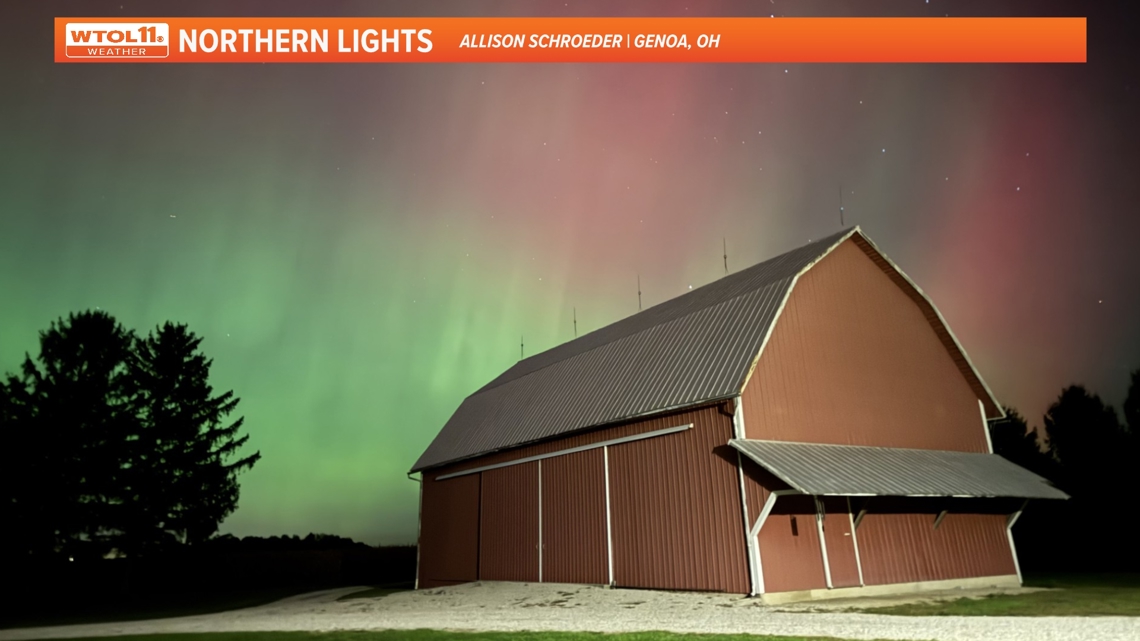
To submit your viewer photos and videos, download the WTOL 11 Weather app.

